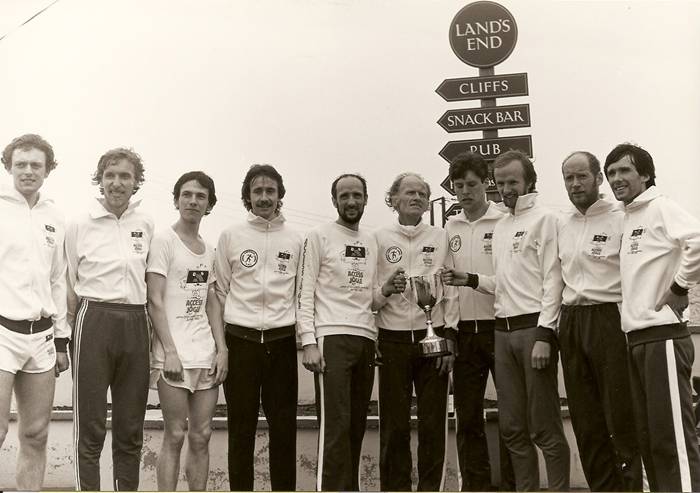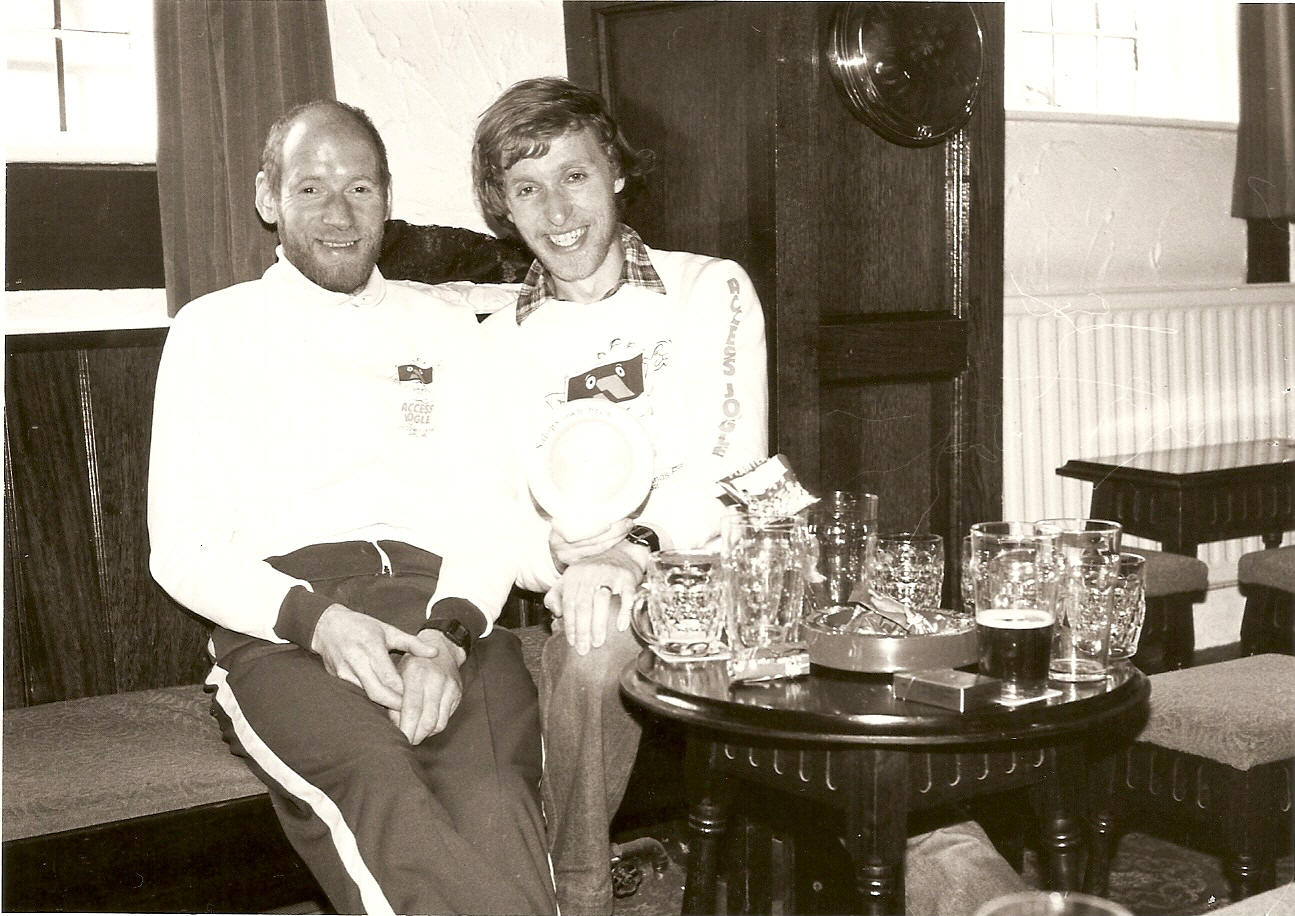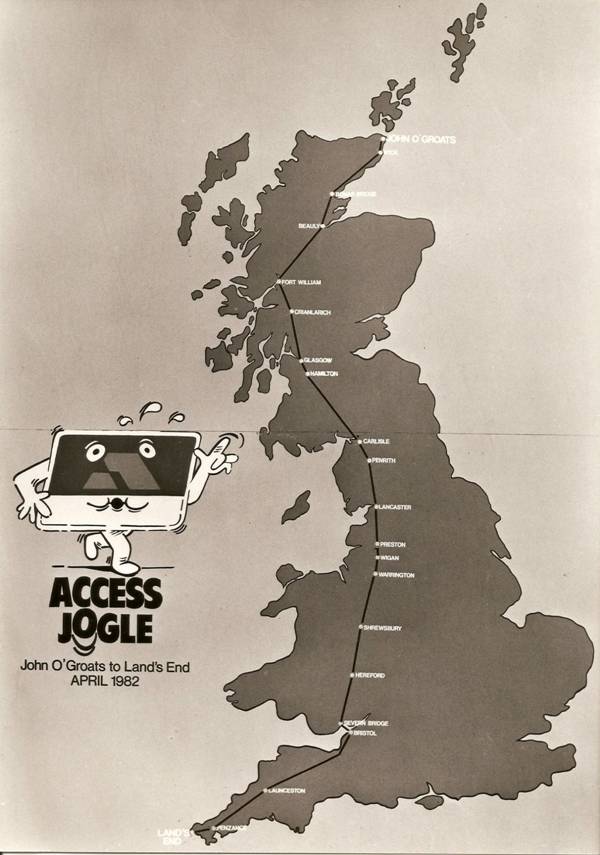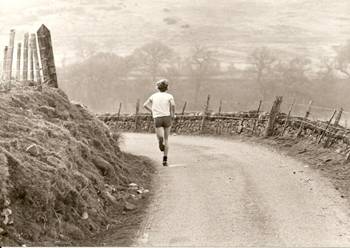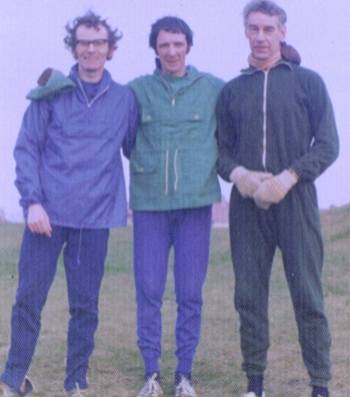Thirty one years after Aberdeen AAC’s initial 1972 effort, there was a reunion for runners, drivers and organisers. Sadly Alastair Wood had died only months before, but his wife Jean and son Duncan were present. Martin Walsh wrote an article for ‘Leopard’, the Aberdeen magazine. Here is an excerpt:
“Memories were rekindled. The little world of each dormobile, with its two running mates and two dedicated drivers, came back in a series of vivid snapshots.
For the runners the imperative had been to push themselves as hard as possible during the five or ten minute bursts, keeping just enough left in the tank to finish each two hour session. Beyond that, the hope that the body would somehow survive until Land’s End. The drivers’ job was to maintain the exact speed demanded by the runners, while map reading, negotiating traffic and effecting runner exchanges on the dot. Sometimes, to protect a runner from the elements, a driver was expected to drive so closely that the runner’s pounding arms were actually inside the open rear door of the van. And woe betide the driver who got his speed wrong.
After each session, having taken whatever abuse the runners hurled at them, they fed their charges, astonished at the monumental quantities of food disappearing into such emaciated bodies. Five vans – five little worlds passing each other like ships in the night. Brief moments of connection at the start and finish of each session and then the inexorable drive south, sometimes passing a lonely runner battling up a hill in the middle of nowhere. Not exactly a spectator sport, but in the minds of all the participants, an epic personal drama.
Images from the relays. April 1972, John o’Groats, cold wind from the Pentland Firth: Alastair Wood starts it all off. Same year, somewhere north of Inverness, night time, runner on the road, headlamps disappear into a ditch! Total darkness. Run with arms outstretched. Road Junction. Terror …. Which way? How long can he maintain speed? Will anyone ever find him?
Corryairack Pass – a sneaky shortcut – but no chance of van accompaniment. A strong guy will have to run it alone. Give it to Don Ritchie. But no one bargained for snow. 20 miles, sometimes knee deep. Don quietly heroic.
The wee small hours, northern Britain, a lonely mountainside: the skirl of Gordon Casely’s bagpipes. A huge lift in spirit.
Somewhere in the north of England, 1973, freezing: canal bridge opening to passing coaster, no time to waste. “I’ll just swim it,” says Peter Duffy, champing at the bit. Quick thinking drivers narrowly prevent him.
Clever shortcut through English town, 1982: runner to detach from mother van, co-ordinator to guide through – but overtaken by greyhound runner. “Ah’m nae waitin for him,” says Peter Wilson. “Turn left, turn left! gasps rapidly receding co-ordinator.
Somewhere in Devon, 1973 and again 1982: everyone exhausted, behind schedule, near despair. Throw everyone into two vehicles, cut down the running interval. Miraculously the speed picks up, everyone feeding off each other’s encouragement or abuse. One runner clocks 18 mph down a hill in Devon. The last 150 miles pass in a blur of euphoria. Runners join hands to cross the final line at Land’s End – the record in Aberdeen’s!
Footnote: On the last relay, two photographers accompanied the team – Frank Woods and Monty Orr. Frank donated to the participants a dozen wonderfully evocative photos of the event. A personal favourite perfectly captured the spirit of the enterprise – a lone runner in the headlights of a van at dusk against a brooding mountain.”
(The 1994 Guinness Book of Records states that the Jogle record was broken in 1990 by Vauxhall AAC in 76:58:29. However, although the Dornoch Bridge shortcut was not open until 1991, they had the advantage of using the Kessock Bridge, which reduced the distance run by at least 10 miles. (The Kessock Bridge was opened in July 1982, several months after AAAC’s April 1982 run.) Since they only outpaced us by 25:39, it can be argued that the 1982 Aberdeen AAC team remains the best ever. Vauxhall AAC are free to disagree.)
